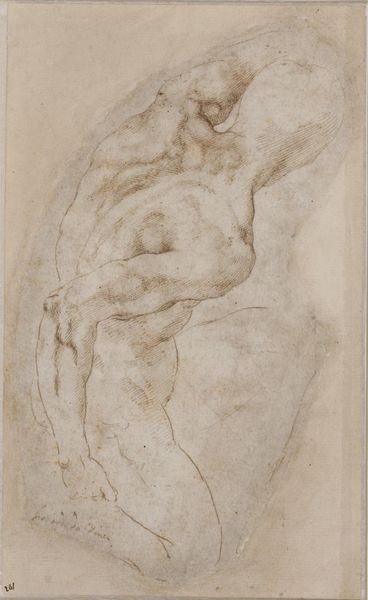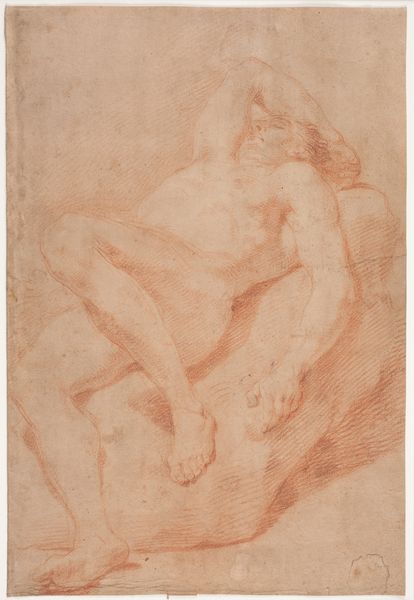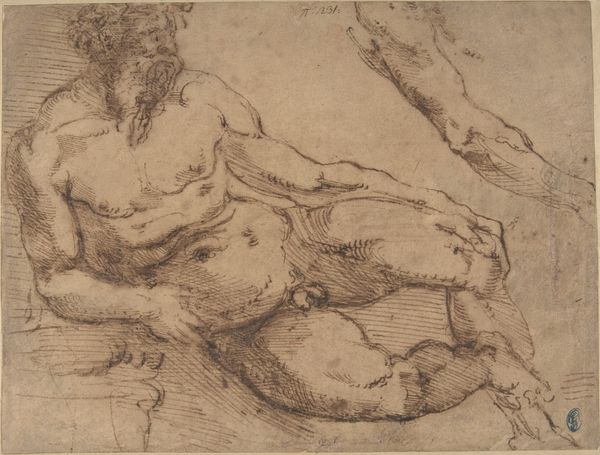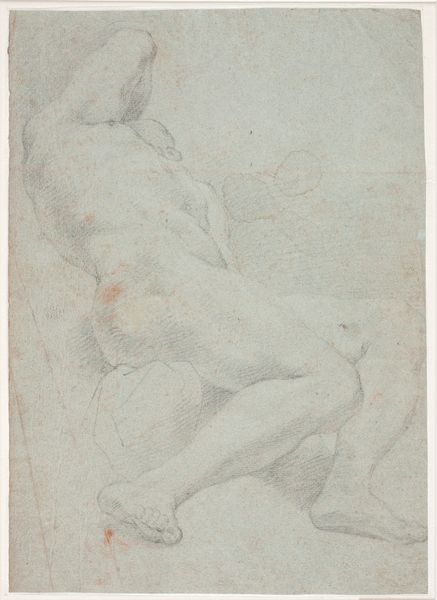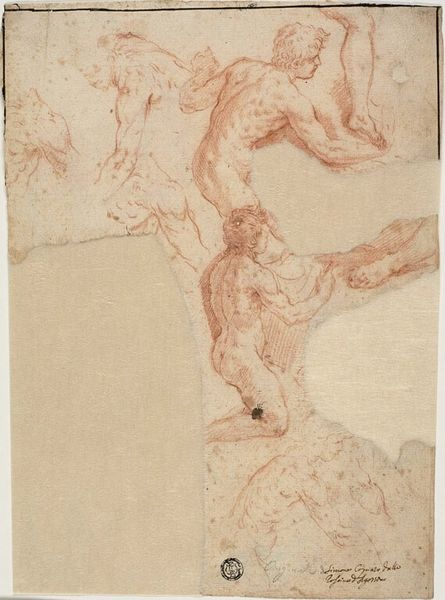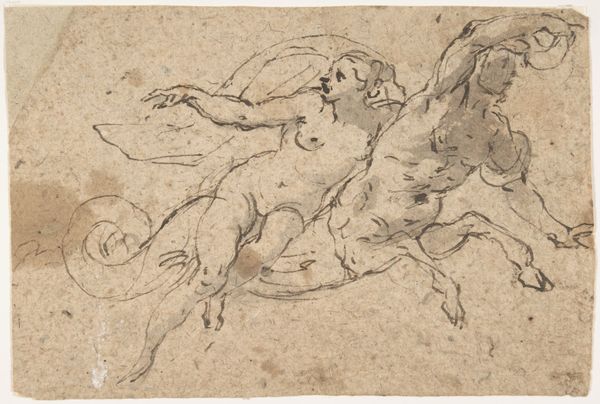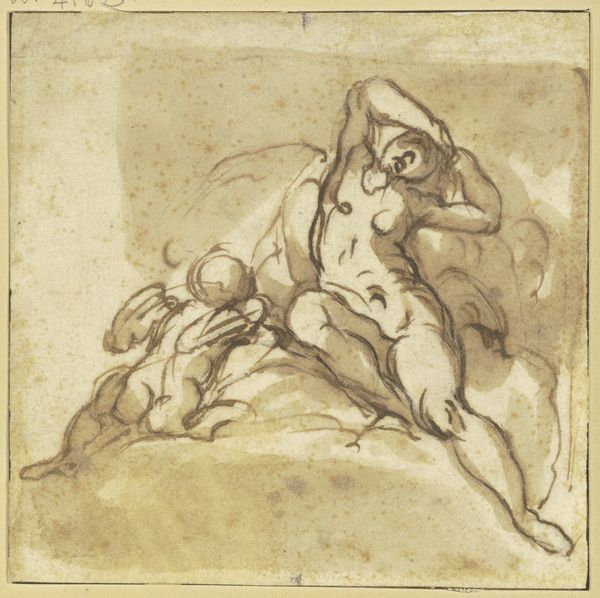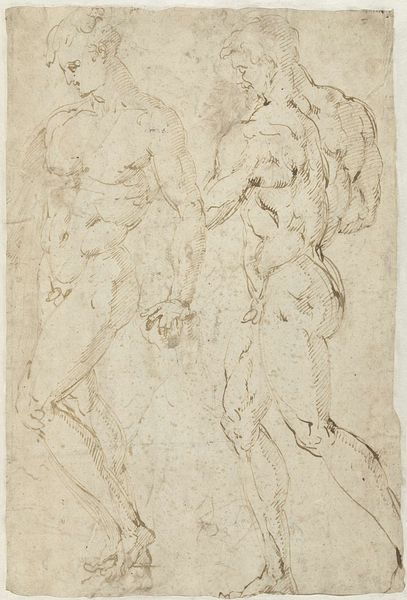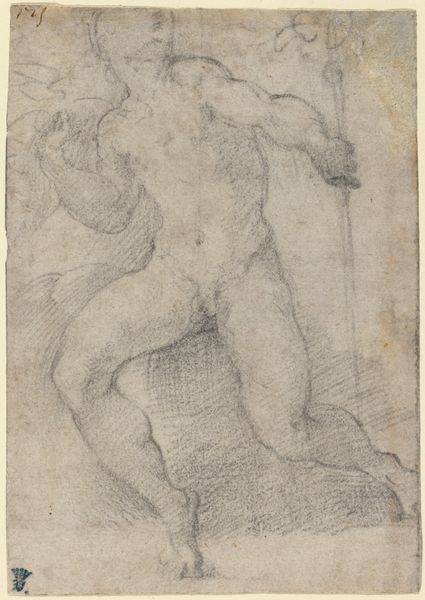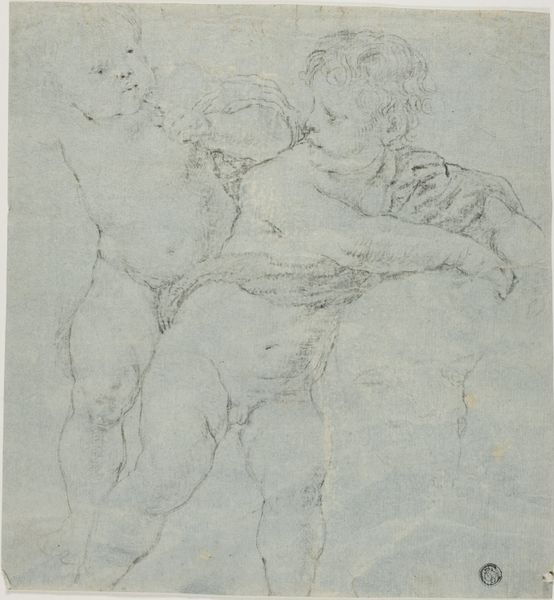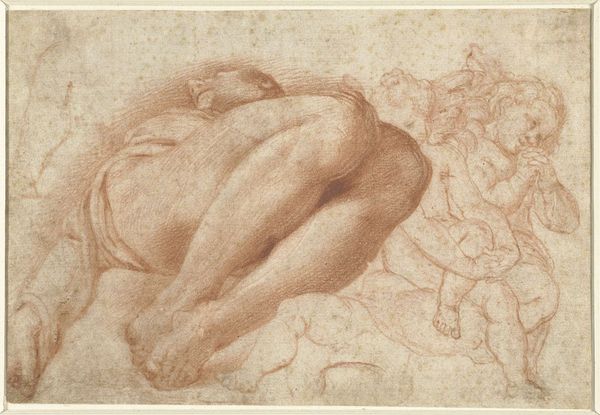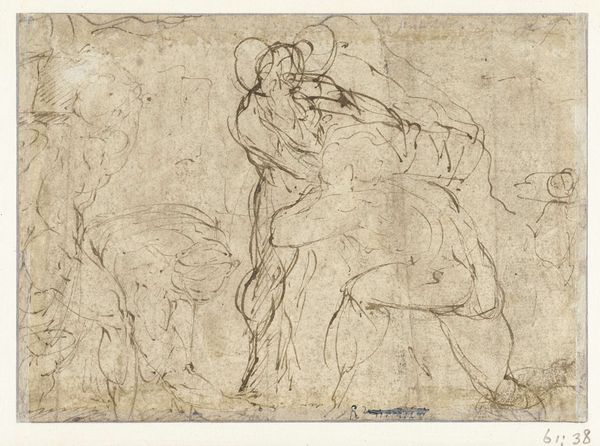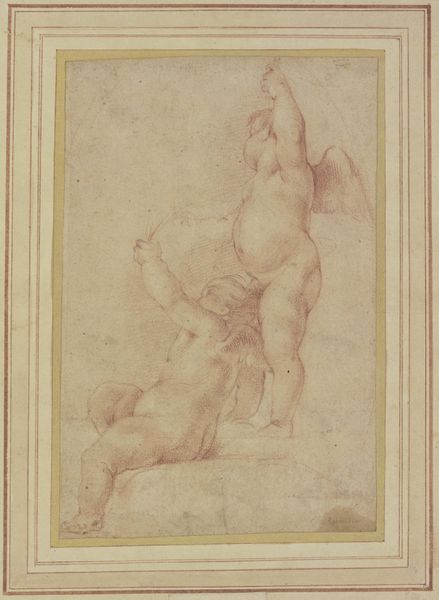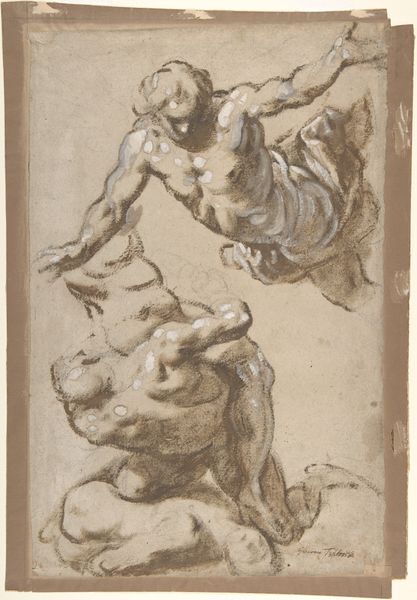
drawing, charcoal
#
drawing
#
charcoal drawing
#
mannerism
#
figuration
#
charcoal
#
charcoal
#
nude
Dimensions: height 168 mm, width 163 mm
Copyright: Rijks Museum: Open Domain
Curator: Welcome. Before us, we have "Two Climbing Men," a charcoal drawing attributed to Hans Speckaert, dating back to approximately 1550-1577. Editor: It has an air of struggle, doesn’t it? The contorted poses, the striving—it’s quite intense, especially rendered in the raw texture of charcoal. Curator: Indeed. The dynamism is striking. Speckaert masterfully employs line and shading to sculpt the figures. Notice the anatomical exaggeration typical of Mannerism; the muscles are emphasized, creating a sense of strained power. The composition draws the eye upwards, reinforcing this sense of ascent, both literal and perhaps metaphorical. Editor: And speaking of straining, I see these figures as enacting a certain power dynamic. Are they collaborators or competitors? One appears to be stepping all over the other. Given the period and artistic conventions, could these figures reflect class struggles or social hierarchies rendered allegorically? The very act of climbing speaks to ambition and striving for a higher position within a rigid structure. Curator: An interesting interpretation. It's true that art of this period often carries layers of social commentary. However, Speckaert seems to be more interested in formal exploration. The positioning of the figures, the dramatic lighting, and the attention to anatomical detail suggest a concern with aesthetic principles above explicit social messaging. The drawing seems a study in human form and spatial relations rather than an illustration of specific societal conflicts. Editor: Perhaps. But the deliberate distortion of the bodies also disrupts conventional notions of beauty. The piece's lack of explicit narrative, coupled with its unsettling physicality, opens avenues for interpreting latent critiques of the social body through the exploration of individual bodies in tension. How much can the lack of context actually suggest about its context? Curator: It's a valuable question. Ultimately, art is often polysemous, and each of us may engage it on multiple levels of interpretation. Editor: Indeed, inviting further exploration into its time and ours. Curator: Thank you for that perspective. I'll certainly reflect on that more closely now.
Comments
No comments
Be the first to comment and join the conversation on the ultimate creative platform.
